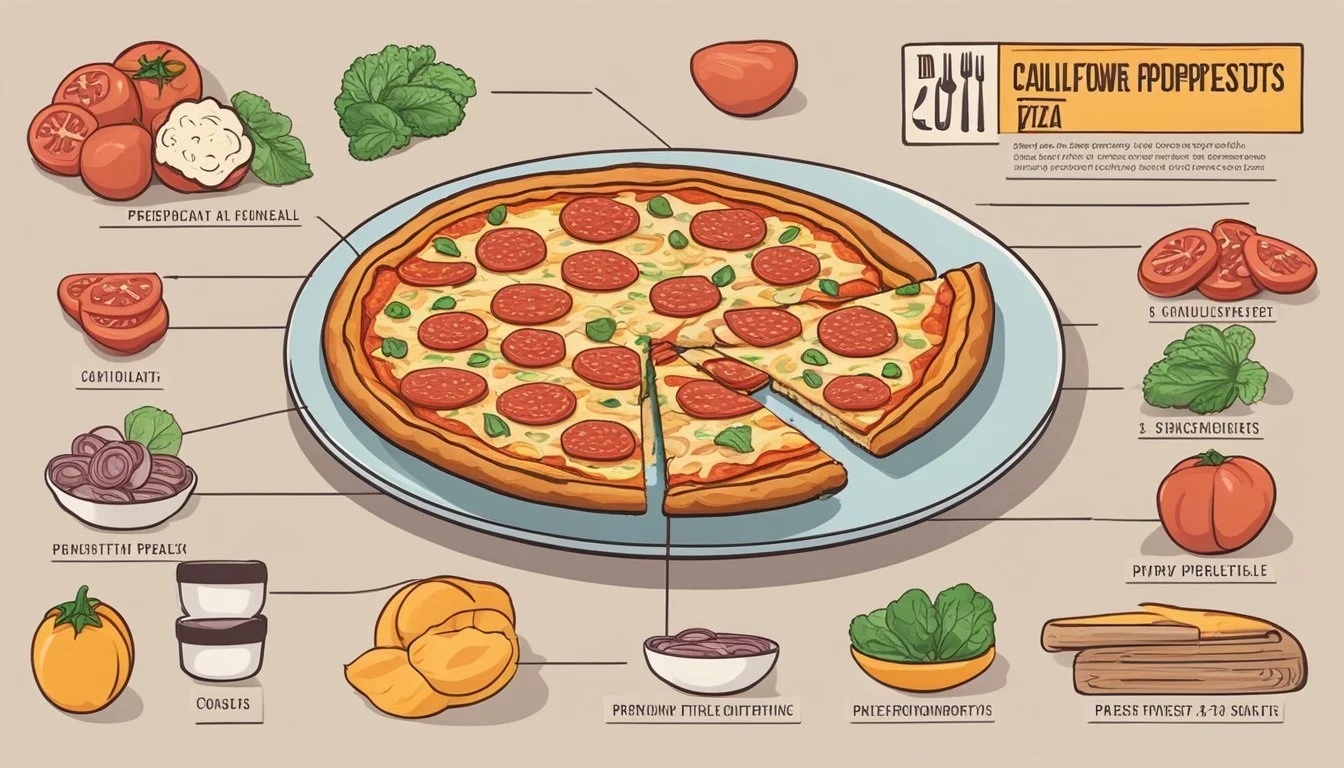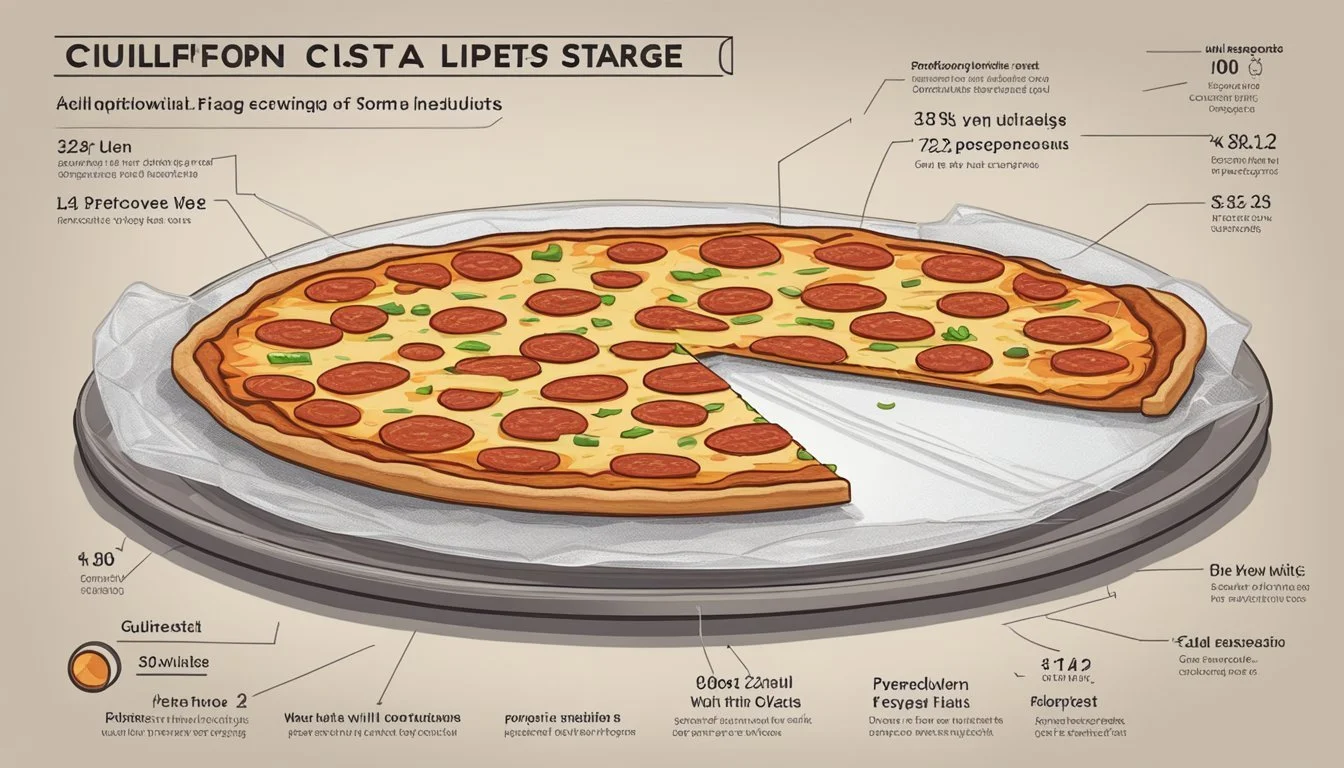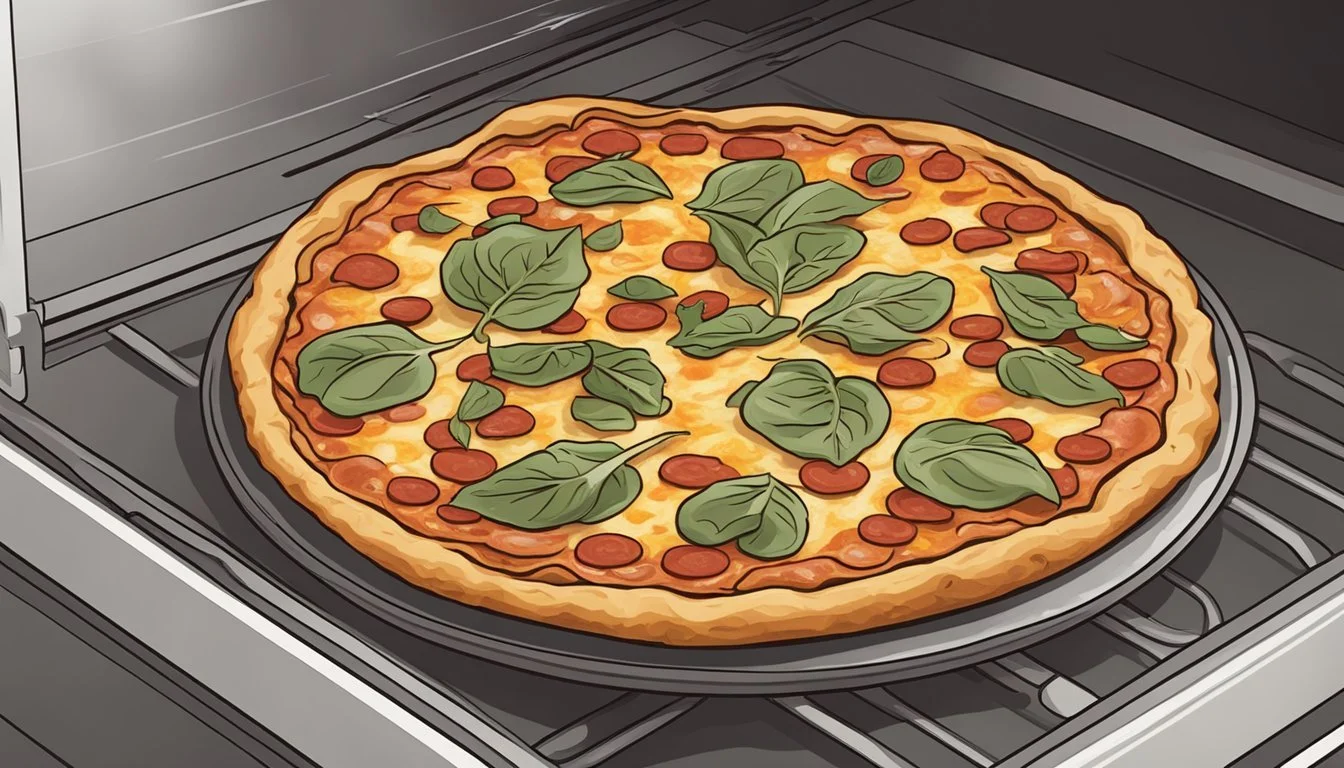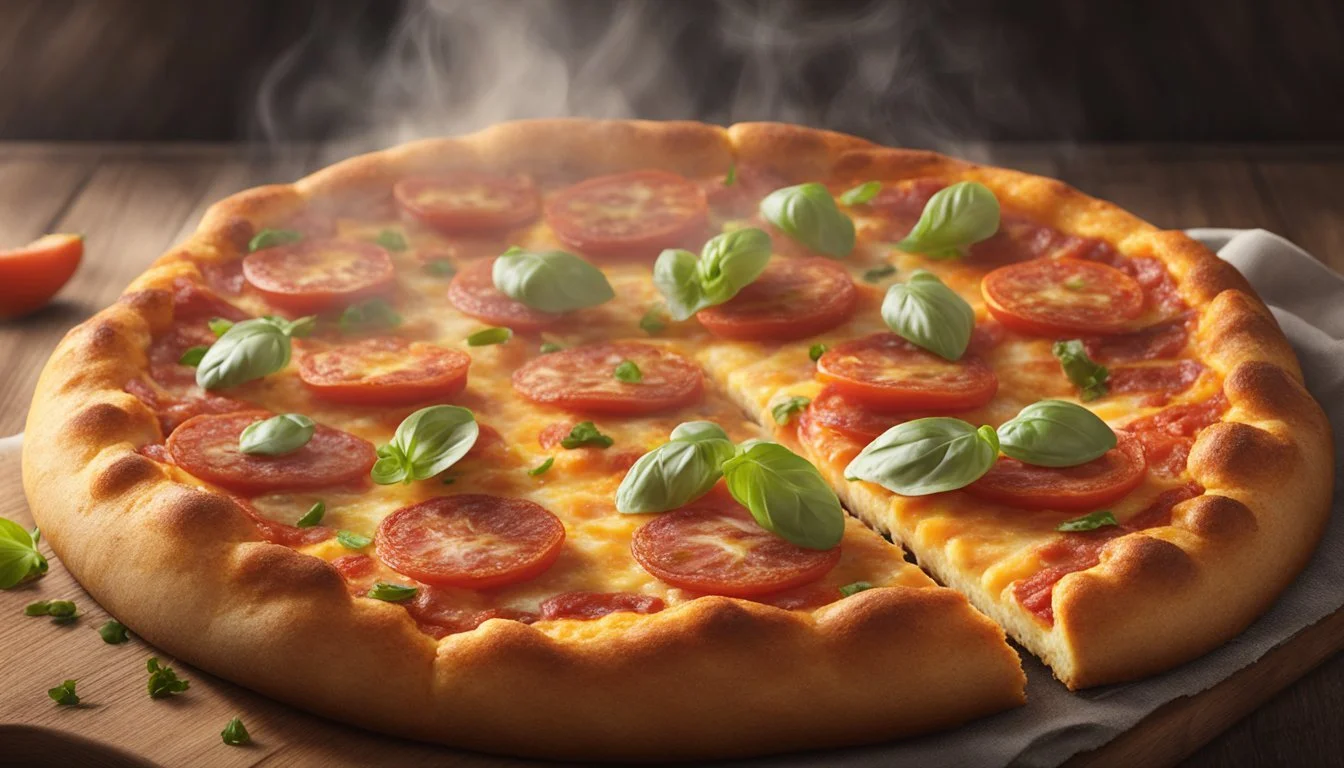How Long Does Cauliflower Crust Pepperoni Pizza Last?
Storage Tips Explained
Cauliflower crust pepperoni pizza has gained popularity as a healthier alternative to traditional pizza, offering diners a nutritious option without sacrificing flavor. It can be stored in the refrigerator for about 4 to 5 days, maintaining its texture and taste. For longer preservation, freezing the pizza can extend its shelf life up to 2 months.
The nutritional benefits of cauliflower crust make it an attractive choice for health-conscious individuals. This type of pizza is lower in carbs and calories, making it a great option for those monitoring their diet. The use of fresh ingredients and minimal preservatives ensures that it remains fresh for several days when refrigerated.
In addition to being a nutritious option, cauliflower crust pepperoni pizza is also convenient. Whether prepared from scratch or using a pre-made crust, it fits well into busy lifestyles. Storing it properly enhances its longevity, allowing you to enjoy a tasty, healthful meal at your convenience.
Ingredients and Nutrition Profile
Cauliflower crust pepperoni pizza provides a healthier alternative to traditional pizza. It features cauliflower as the primary ingredient in the crust and includes a variety of toppings like mozzarella cheese and pepperoni, offering a lower-carb, gluten-free option.
Cauliflower as a Main Ingredient
Cauliflower forms the base of the crust. It is typically processed into a fine, rice-like texture before being mixed with other materials. This cruciferous vegetable is low in calories and contains significant amounts of fiber, vitamins C and K, and folate.
To prepare cauliflower for the crust, it is often pulsed in a food processor until it reaches a breadcrumb-like consistency. The cauliflower is then microwaved to remove excess moisture, which helps create a firm, cohesive crust.
Nutritional Benefits of Cauliflower Crust
A cauliflower crust generally offers fewer carbohydrates compared to traditional pizza crusts. This makes it an attractive option for low-carb and gluten-free diets. A typical serving contains reduced calories and carbohydrates while still delivering fiber, vitamins, and essential minerals.
Nutritional Snapshot:
Calories: Around 215 - 275 per slice
Carbohydrates: 24g
Protein: 22g
Fat: Varied based on toppings, with some being high in saturated fat
Additional Ingredients in Cauliflower Crust
Other components such as rice flour, flax meal, and low-moisture mozzarella cheese are often added to bind the crust. These ingredients help to maintain the structure and taste.
Common additives include:
Rice Flour: Adds texture and helps hold the crust together.
Flax Meal: Contributes additional fiber and healthy fats.
Garlic Powder, Spices: Enhance flavor.
Cheese and Toppings
Mozzarella cheese serves as one of the primary cheeses, providing a traditional pizza flavor. Sometimes, other cheeses like Parmesan may be included for added depth of flavor.
Cheese Benefits:
Calcium: High in calcium, which supports bone health.
Protein: Each slice can offer around 22g of protein.
Pepperoni is a common topping, contributing to higher fat and sodium content but adding a traditional taste that many enjoy. Tomato sauce, frequently seasoned with garlic, basil, and oregano, rounds out the toppings.
Toppings Breakdown:
Pepperoni: Adds protein but also increases sodium and saturated fat.
Tomato Sauce: Adds flavor and a small amount of iron and vitamin C.
By focusing on these ingredients and nutrients, cauliflower crust pepperoni pizza provides a balanced alternative for those looking to enjoy pizza while adhering to specific dietary restrictions.
Preparation and Cooking Instructions
To make a delicious cauliflower crust pepperoni pizza, proper preparation and cooking techniques are essential. Follow these detailed steps to achieve a crispy, golden brown crust and a melt-in-your-mouth pizza.
Making Cauliflower Crust
Begin by preheating the oven to 350°F (175°C). Take one large head of cauliflower, cut it into florets, and process it in a food processor until it resembles rice. Spread the cauliflower rice on a baking sheet lined with parchment paper. Roast the cauliflower for about 20 minutes, turning halfway, until it begins to brown.
Transfer the roasted cauliflower to a large bowl. Add 1 cup of part-skim shredded mozzarella, ¼ cup grated Parmesan cheese, one beaten egg, 1 teaspoon garlic powder, and Italian seasoning. Mix these ingredients thoroughly to form a dough. Press the dough into a circular pizza crust on a parchment-lined baking sheet, ensuring it's about ¼ inch thick.
Baking the Pizza
Increase the oven temperature to 425°F (220°C). Pre-bake the cauliflower crust for about 12-15 minutes until it becomes firm and starts to turn golden brown. Remove from the oven and layer the crust with tomato sauce, shredded mozzarella cheese, and pepperoni slices.
Place the topped pizza directly on the oven's middle rack for the best results. Bake for an additional 10-12 minutes or until the cheese is melted and bubbly. For a crispier finish, broil on low for an extra 1-2 minutes. Let the pizza cool for a moment before slicing and serving.
Storage Guidelines
Proper storage techniques are essential for maintaining the freshness and quality of cauliflower crust pepperoni pizza. By adhering to these storage methods, you can extend the shelf life and ensure food safety.
Storing Uncooked Cauliflower Crust
Uncooked cauliflower pizza crust should be stored in the refrigerator. Ensure it's wrapped tightly in plastic wrap or placed in an airtight container. This prevents moisture buildup and keeps the crust fresh for up to 3-4 days.
For longer storage, freezing is recommended. Cut the crust into individual servings and wrap each in aluminum foil or a dish towel, then place in a resealable freezer bag. Frozen crust can last up to 3 months. Label the storage bags with dates to keep track of shelf life.
Refrigerating Cooked Pizza
Cooked cauliflower crust pepperoni pizza can be stored in the refrigerator for up to 3-4 days. It's best to use an airtight container to keep the pizza fresh.
Separate layers of pizza with wax paper or paper towels to prevent them from sticking together. Make sure the refrigerator temperature is set at or below 40°F (4°C) to maintain food safety. Reheat leftovers in an oven or toaster oven to regain crispiness.
Freezing and Thawing
For extended storage, cooked pizza can be frozen. Slice the pizza into individual pieces and wrap each slice tightly in plastic wrap. Then, place the wrapped slices in an airtight freezer bag. Frozen slices can last up to 2 months.
To thaw, transfer slices from the freezer to the refrigerator and let them thaw overnight. Alternatively, use a microwave's defrost setting if you're in a hurry. Reheat the thawed pizza in the oven at 375°F (190°C) for about 10 minutes or until heated through. This method helps retain the pizza's texture and flavor.
Reheating and Serving Suggestions
Reheating cauliflower crust pepperoni pizza properly is key to maintaining its texture and flavor. The following methods and serving ideas are tailored to enhance your pizza experience, making every bite enjoyable.
Best Methods to Reheat
For the best results, reheat cauliflower crust pizzas in the oven. Preheat the oven to 375°F (190°C). Place the pizza slices on a baking sheet and heat for 5-7 minutes to get the crust crispy and the cheese perfectly melted.
Using a skillet is another excellent option. Heat a skillet over medium heat and add a small amount of olive oil to prevent sticking. Cover the skillet with a lid, and cook the slices for 3-4 minutes.
Avoid the microwave for reheating, as it can make the crust soggy. If microwave reheating is necessary, use short intervals and a microwave-safe plate to avoid overcooking.
Serving Ideas
Enhance your pizza with fresh toppings. Chopped basil, oregano, or arugula can provide a burst of flavor and a fresh touch.
Drizzle pesto or a bit of marinara sauce on top of each slice before serving. This adds a different flavor dimension and keeps the pizza from feeling dry.
For a more exciting serving option, cut the pizza into bite-sized pieces and serve on skewers with grape tomatoes and mozzarella balls. This makes for a great appetizer or snack, perfect for parties and gatherings.
Pairing with Sides
Pair your cauliflower crust pizza with a light and refreshing side dish. A simple mixed greens salad with a light vinaigrette complements the pepperoni's savory flavor.
Roasted vegetables like zucchini, bell peppers, or asparagus also make for a nutritious and delicious side.
For a heartier meal, serve with a bowl of minestrone or chicken tortilla soup. These sides turn your pizza night into a satisfying and balanced dining experience.
Complete the meal with a dipping sauce trio: pesto, marinara sauce, and garlic aioli. These dips provide different flavor profiles and make every bite of pizza exciting.
Alternative Dietary Considerations
Cauliflower crust pepperoni pizza can cater to various dietary needs and preferences. From low-carb diets to plant-based lifestyles, here's how this versatile dish can fit different nutritional goals.
Keto and Low-Carb Options
For those on a Keto or low-carb diet, cauliflower pizza crust is an excellent choice. Traditional pizza crusts are high in carbohydrates, which can disrupt ketosis — a metabolic state crucial for a ketogenic diet.
Cauliflower crust is naturally lower in carbs and can be made without any high-carb flours or ingredients.
Additionally, incorporating cheese and other high-fat, low-carb toppings can help meet the macronutrient requirements for Keto followers.
Be conscious of the toppings to avoid hidden sugars or carbs, and opt for high-fat, low-carb options like pepperoni, sausage, and bacon.
These adjustments help lower overall carb intake while still allowing for a delicious pizza experience.
Vegetarian and Vegan Choices
Vegetarians can enjoy cauliflower crust pizza, provided they either use vegetarian-friendly cheese or replace traditional cheeses with plant-based alternatives.
Various vegetables like bell peppers, mushrooms, and spinach make excellent pizza toppings, adding both flavor and nutritional benefits.
For vegans, replacing animal products is key. Vegan cheese made from nuts or soy can be used in place of regular cheese.
Additionally, swap out traditional pepperoni for plant-based versions, which are increasingly available and designed to mimic the taste and texture of meat.
Combining a vegetable-based crust with these plant-based toppings can result in a delicious, cruelty-free meal that aligns with vegan dietary principles.







